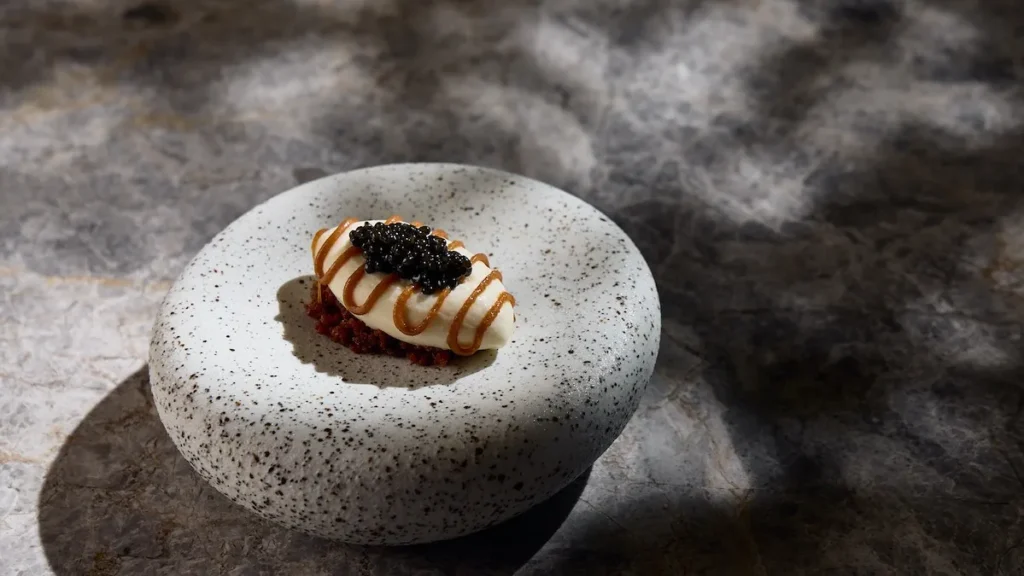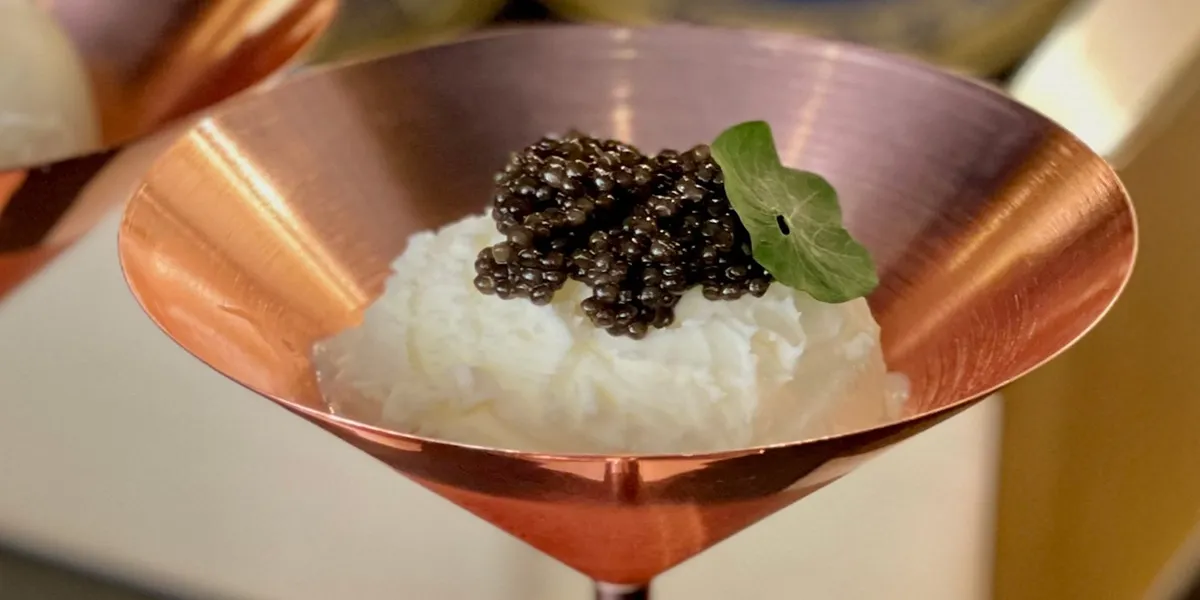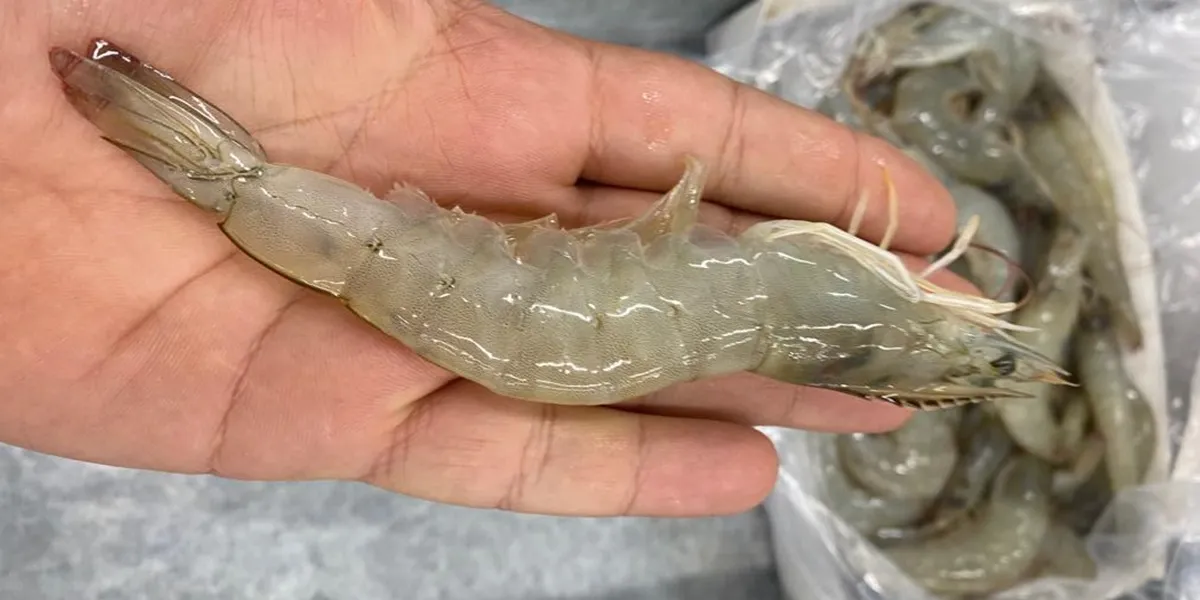Few delicacies evoke such rich imagery and cultural resonance as caviar. More than just a culinary luxury, caviar has become a powerful symbol in cinema and literature — embodying sophistication, secrecy, and sometimes, corruption. From silver trays in noir films to cryptic dinner scenes in high-brow novels, this glossy gem of the sea often serves a deeper narrative role than mere indulgence.
But what exactly is caviar? Derived from the salt-cured eggs of sturgeon, caviar exists in diverse types — from Beluga and Ossetra to Sevruga — each with unique texture, flavor, and historical significance. Scientifically, caviar is packed with omega-3 fatty acids, vitamin B12, and antioxidants, making it not just a symbol of opulence but a nutrient-dense food source with proven health benefits.
In this article, we explore the types of caviar, its nutritional properties, and how this iconic delicacy has shaped storytelling across books and screen. Join us as we decode the cultural language of caviar — one exquisite scene at a time.
Caviar on Screen: Why Luxury Foods Steal the Scene
From the opening credits to final acts, directors often use food to signal power, seduction, or social class — and few ingredients are more visually and symbolically potent than caviar. In films like The Great Gatsby, Casino Royale, and The Godfather Part III, caviar appears not merely as sustenance but as a narrative tool. It signifies wealth, exclusivity, and at times, calculated indulgence.
But What is caviar? It is the salt-cured roe of sturgeon, historically sourced from the Caspian and Black Seas. Beluga, Ossetra, and Sevruga are among the most renowned types. Its deep cultural association with aristocracy and ceremonial dining makes it the perfect on-screen cue for excess, control, or hidden agendas.
Directors understand that a single spoonful of caviar can speak volumes about a character’s intentions or status. The setting — be it a black-tie gala or a private jet — amplifies the symbolism. Caviar becomes a cinematic shorthand for privilege, secrecy, and even danger. It doesn’t merely decorate the table; it elevates the tension.
Caviar’s rich texture, jet-black or golden hue, and ritualistic consumption make it visually compelling. In some cases, rejecting caviar reveals rebellion or detachment from the elite.
As cinema evolves, luxury foods like caviar continue to punctuate critical moments, not just for opulence but for what they imply about identity, hierarchy, and desire. This is why caviar consistently steals the scene — because behind the glimmer of every pearl lies a story waiting to unfold.
From Plate to Plot: Caviar as a Literary Symbol of Wealth and Desire
Caviar in literature has never been just about taste. Writers from different eras and cultures have consistently used it as a symbol — not only of material wealth, but of deeper human desires and internal conflicts. In novels like American Psycho, caviar reveals the protagonist’s obsession with image and status. In Anna Karenina, it underscores opulent lifestyles teetering on emotional ruin.
The function of caviar in literature often goes beyond simple sensory appeal. It stands as a quiet testament to privilege, indulgence, and sometimes moral decay. Its texture, rarity, and preparation rituals make it ideal for illustrating distance between characters — whether emotional, social, or moral.
Authors also tap into the psychological dynamics of caviar: the longing to possess what is rare, the fear of being excluded, and the illusion of control through consumption. Whether it appears on a banquet table, in a private meal, or mentioned in passing, caviar’s presence often signals something crucial about character or class.
Interestingly, current Caviar Market Trends also influence how contemporary authors write about luxury. As sustainable and farmed caviar becomes more mainstream, modern literature begins to subvert the traditional associations of elitism. Writers now explore contradictions: ethical indulgence, democratized luxury, or even nostalgic longing for “authentic” old-world opulence.
Thus, caviar serves not just as garnish for the narrative, but as a layered symbol of longing, legacy, and loss. Through caviar, writers subtly expose vulnerabilities masked by luxury. The next time you see caviar on the page, look closer — it might be revealing far more than a character’s taste.
The Psychology Behind Caviar: Why It Triggers Prestige in Characters and Viewers
Caviar holds a unique psychological grip on our imagination — one shaped by centuries of association with wealth, status, and exclusivity. In both film and literature, when a character is seen savoring caviar, it immediately sends a signal of power, sophistication, or even danger. But why does this small, glistening delicacy carry such narrative weight?
The answer lies in a blend of visual symbolism and neuropsychology. Luxury foods activate brain regions linked to reward, admiration, and social comparison. Caviar, in particular, sits at the intersection of rarity and ritual — making it a potent cue for prestige, whether in storytelling or real-life perception.
Across different cultures, the symbolic value of Types of caviar — from Beluga to Sevruga — varies, but the underlying message remains the same: exclusivity. When viewers see characters consume or refuse caviar, it often reflects their attitude toward power or belonging. The gesture isn’t about hunger — it’s about hierarchy.
Moreover, researchers have found that food cues, especially luxury ones, enhance emotional engagement. In narrative contexts, caviar amplifies tension. It draws viewers and readers into a scene’s atmosphere, elevating drama with a detail as subtle as a spoonful.
For characters, indulging in caviar might symbolize control, or vulnerability hidden behind excess. For audiences, it offers a glimpse into a world of fantasy and aspiration, where taste serves as narrative texture.
Ultimately, caviar’s psychological allure helps writers and directors add depth to characters without words. It’s not just food; it’s a mirror of ambition, control, and concealed emotion — all packed into a single, salty bite.
East vs. West: How Caviar Symbolism Differs in Global Cinema and Literature
While caviar often appears as a symbol of opulence in Western media, its representation in Eastern storytelling holds different layers of meaning. This cultural divide reveals how symbolism evolves depending on historical, social, and emotional context.
In American and European cinema, caviar is typically associated with high society, exclusivity, or even corruption. It often appears in the hands of billionaires, spies, or aristocrats, reinforcing elitism or power games. In contrast, Eastern representations — particularly in Russian and Iranian cinema or literature — sometimes portray caviar as a nostalgic relic or a symbol of lost heritage.
Take Iranian caviar, for example. In Iranian poetry and post-revolutionary cinema, caviar may evoke past abundance, trade identity, or even themes of sacrifice and loss. It’s not only about indulgence but about national pride, memory, and complex political symbolism.
Similarly, Russian literature and Soviet-era films often depict caviar within a more conflicted framework. It might appear as an ironic symbol of failed idealism or uneven distribution of wealth. Unlike the Western lens, which frequently glamorizes caviar, Eastern narratives might use it to critique modernity or colonial memory.
The symbolic divergence reflects broader cultural values. While the West equates caviar with individual success, the East sometimes frames it within collective identity or cultural decline. These subtle differences in portrayal help define characters, create historical depth, and challenge the viewer’s assumptions.
Understanding this contrast allows us to appreciate how caviar, though globally recognized, tells different stories depending on the lens through which it is viewed. It’s not just a luxury — it’s a culturally flexible symbol that adapts to local fears, pride, and histories.

The Femme Fatale and Caviar: Seduction, Mystery, and Taste
The femme fatale archetype has long captivated readers and audiences — a woman cloaked in allure, danger, and ambiguity. Caviar, with its sensual texture and ceremonial consumption, naturally aligns with this persona. When paired together in literature and cinema, the result is a rich tapestry of symbolic cues tied to seduction, dominance, and control.
In noir films and spy thrillers, femme fatales are often seen delicately serving or savoring caviar. This isn’t incidental — it’s deliberate. Caviar accentuates their power over the scene. The act of eating it slowly, luxuriously, mirrors their control over time, space, and others. The setting — dimly lit rooms, velvet lounges, champagne flutes — reinforces the aura of exclusivity.
But beneath the visual seduction lies something deeper. Both caviar and the femme fatale operate on dual levels: beauty and danger. Just as caviar can symbolize status or indulgence, it also evokes hidden costs — emotional or moral. This parallel makes it the perfect culinary extension of the mysterious woman.
From a physiological angle, the Health benefits of caviar — rich in omega-3 fatty acids and antioxidants — add an ironic layer. The food that looks decadent is, in reality, nourishing. Similarly, femme fatales often appear destructive but may act out of survival or hidden virtue. The symbolism isn’t just surface-level; it’s layered and paradoxical.
When used in modern storytelling, this pairing subverts stereotypes. Some narratives now present femme fatales who offer caviar not to seduce, but to reveal agency, reclaim control, or challenge male expectations. In these stories, caviar becomes more than indulgence — it becomes a tool of power and resistance. That’s why the connection between taste and mystery remains endlessly compelling.
Deconstructing the Myth: Is Caviar Still a Relevant Luxury in Modern Storytelling?
Caviar has long held its place as a cinematic and literary emblem of wealth, mystery, and seduction. But in an era where authenticity, sustainability, and emotional depth increasingly dominate narratives, one must ask: is caviar still relevant as a symbol of luxury in modern storytelling?
Today’s audiences are more conscious of ethical sourcing and narrative realism. As a result, High quality caviar no longer merely signals elitism; it now demands context. When used effectively, caviar in films or novels can reflect deeper ideas — not just indulgence, but generational wealth, class divides, or personal rebellion. In shows like Succession or Billions, caviar scenes feel less about food and more about power dynamics and psychological warfare.
Furthermore, the democratization of luxury — with farm-raised caviar and sustainable practices — reshapes its symbolic value. Characters who once flaunted caviar now may reject it as outdated or use it ironically to mock inherited privilege. Modern writers increasingly subvert traditional symbols to reflect shifting values.
Still, caviar persists, because its visual and cultural weight remains potent. It offers writers and directors a versatile shorthand for mood, setting, and silent tension. Whether reinforcing opulence or highlighting disconnection, the mere presence of caviar — especially when high-quality and artisanal — continues to convey layers of meaning.
In this evolving landscape, caviar’s relevance lies not in how rare it is, but in how consciously it’s used. As long as stories explore power, beauty, and illusion, caviar will remain a fitting — if more nuanced — part of the narrative toolkit.
Caviar and Character Arcs: How a Bite Signals Transformation or Betrayal
In compelling storytelling, seemingly minor actions — a glance, a gesture, a bite of food — often reveal major shifts in character. Caviar, as a symbol rich with sensory and cultural layers, frequently plays this role. A character’s decision to indulge, refuse, or serve caviar can mark a turning point in their arc, signaling allegiance, betrayal, or self-reinvention.
For example, in films like The Talented Mr. Ripley, caviar scenes subtly underscore character manipulation and shifting power dynamics. The setting may seem refined, but the emotional undercurrent is charged. A character consuming caviar might be enjoying triumph or masking guilt. In literature, similar moments highlight hidden ambition, moral descent, or a break from the past.
Interestingly, beyond its symbolic function, caviar also brings real-world value. The health benefits of caviar — including omega-3 fatty acids, vitamin B12, and essential minerals — add another narrative layer. A character choosing caviar over other indulgences might not only be displaying taste, but also control or discipline masked as indulgence.
These nuances allow creators to encode layers of psychological and emotional meaning in a single, wordless moment. Caviar becomes a litmus test: Who has power? Who’s pretending? Who’s changed?
Moreover, its ceremonial nature adds gravity. Serving caviar is often slow and deliberate, giving space for reflection or manipulation. As storytelling evolves to focus more on internal transformation and subtle cues, food symbolism — particularly through caviar — grows more powerful, not less.
In essence, a single bite of caviar can carry more weight than pages of dialogue. It can whisper of secrets, promise betrayal, or herald rebirth. That’s the subtle genius of symbolic foods in narrative form.
Iconic Scenes Featuring Caviar: The Cultural Moments That Defined Elegance
Some cinematic and literary moments become timeless — not just because of dialogue or plot, but because of visual and symbolic elements that leave lasting impressions. Caviar has featured in many such scenes, defining elegance, wealth, or tension in ways that are instantly recognizable and deeply memorable.
In The Great Gatsby, lavish parties often include caviar as part of the spectacle, symbolizing Gatsby’s attempt to reclaim lost love through extravagant displays. In James Bond films, caviar is served alongside espionage and seduction, marking Bond as a man of refined danger. In The Godfather Part III, a quiet dinner featuring caviar becomes a moment of calm before betrayal, adding weight to every small gesture.
Literary works use similar techniques. In Anna Karenina, caviar subtly marks class divides and emotional distance. In modern novels like The Bonfire of the Vanities, it underscores greed, image obsession, and the fragility of privilege.
What makes these moments iconic is not the caviar itself, but what it represents. The contrast of luxury against moral ambiguity, or elegance against psychological breakdown, elevates scenes from indulgent to iconic.
Additionally, these depictions often include specific settings — crystal dishes, pearl spoons, dimly lit rooms — that enhance the sensory and emotional atmosphere. The result is a scene that lingers in the mind, not for the food, but for what the food means.
These iconic moments don’t just entertain; they shape cultural perceptions of luxury, power, and desire. Caviar doesn’t just sit on a plate — it crystallizes emotion, class, and symbolism into a visual shorthand that continues to define elegance across generations.
The Future of Caviar Symbolism: What Artificial Luxury Means for Storytelling
As sustainability, innovation, and accessibility reshape global luxury markets, storytelling also begins to reflect these shifts. Caviar, once an untouchable emblem of old-money elegance, is evolving — both in real life and on screen — into something far more complex.
The rise of lab-grown caviar, sustainable aquaculture, and plant-based alternatives introduces a new era of symbolic meaning. In future narratives, caviar may no longer represent unreachable wealth but rather curated identity, ethical consumption, or performative luxury.
This transition mirrors a broader cultural shift where audiences seek transparency and authenticity. A character now offering ethically sourced or vegan caviar might signal environmental awareness, while another insisting on traditional Beluga may represent outdated ideals or hidden guilt.
Writers and filmmakers have already begun to explore this terrain. In futuristic or dystopian genres, artificial luxury — including synthetic caviar — highlights contradictions between aesthetic abundance and emotional scarcity. It raises questions: Is the experience authentic? What are we willing to sacrifice for symbolism?
This evolving narrative device also opens up new roles for caviar: it may become a metaphor for simulation, for identity construction, or for tension between heritage and progress. Where it once symbolized pure indulgence, it now carries layers of irony, commentary, and introspection.
As cultural values evolve, so will the meanings assigned to familiar symbols. Caviar’s future in storytelling isn’t about fading out — it’s about adaptation. By embracing innovation and redefining luxury, caviar remains a compelling, ever-relevant element for building characters, tension, and philosophical themes in modern narratives.
Concluding Title: Caviar’s Legacy in Culture: A Timeless Symbol of Taste, Power, and Intrigue
Caviar transcends its role as a gourmet ingredient — it functions as a layered symbol within storytelling, revealing character traits, societal contrasts, and hidden desires. Through its recurring presence in both cinema and literature, caviar silently speaks of luxury, mystery, and transformation. While its real-life benefits include a range of essential nutrients like omega-3s and selenium, its symbolic weight adds narrative richness to the worlds it inhabits.
Whether gracing the table of a villain or signifying rebirth in a dramatic arc, caviar continues to hold a place of prestige in our cultural consciousness. By understanding its types and health properties, we gain a deeper appreciation not only for what caviar is, but for what it represents. Let caviar’s story within the arts inspire you to look beyond the surface — because every detail on the plate might just be part of the plot.




